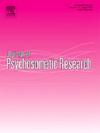基于扩展计划行为理论的精神分裂症患者药物依从性的通径分析:一项横断面研究
IF 3.3
2区 医学
Q2 PSYCHIATRY
引用次数: 0
摘要
服药依从性是社区精神分裂症患者面临的一个重大挑战。从行为理论的角度理解影响因素,可以为设计有效的干预措施以提高药物依从性提供有价值的指导。目的基于扩展计划行为理论(TPB),探讨中国社区精神分裂症患者药物依从性的相关因素及其机制。方法采用7天回忆法测定药物依从性。采用《药物态度量表-10项量表》对用药态度进行评估,采用《适当用药自我效能感量表》对行为控制知觉进行评估,采用自编项目对主观规范、意向和监管进行评估。通过通径分析验证了基于扩展TPB的假设。结果共调查社区精神分裂症患者468例,其中81.20%表现出依从性。意向(标准化效应:0.897)和监管(标准化效应:0.084)与药物依从性直接相关。态度(标准化效应:0.268,计算为0.299 × 0.897)、主观规范(标准化效应:0.283,计算为0.316 × 0.897)和感知行为控制(标准化效应:0.187,计算为0.208 × 0.897)通过意图与药物依从性间接相关。结论扩展TPB模型可用于预测中国社区精神分裂症患者的药物依从性。它为设计针对态度、主观规范、感知行为控制和监督的干预措施提供了一个强有力的框架,以增强药物依从性。本文章由计算机程序翻译,如有差异,请以英文原文为准。
Path analysis of medication adherence in schizophrenia patients based on the extended theory of planned behavior: A cross-sectional study
Background
Medication adherence is a significant challenge among community-dwelling patients with schizophrenia. Understanding the influencing factors through the lens of behavioral theory can provide valuable guidance for designing effective interventions to improve medication adherence.
Objectives
This study aimed to identify the factors associated with medication adherence and the underlying mechanisms, based on the extended Theory of Planned Behavior (TPB), among community-dwelling patients with schizophrenia in China.
Methods
Medication adherence was measured using the seven-day recall method. Medication attitudes were assessed using the Drug Attitude Inventory-10-Item Version, perceived behavioral control was measured with the Self-Efficacy for Appropriate Medication Use Scale, and subjective norms, intention, and supervision were evaluated using self-developed items. Path analysis was conducted to test the hypotheses based on the extended TPB.
Results
A total of 468 community-dwelling patients with schizophrenia were surveyed, and 81.20 % of them demonstrated adherent. Intention (standardized effect: 0.897) and supervision (standardized effect: 0.084) were directly associated with medication adherence. Attitude (standardized effect: 0.268, computed as 0.299 × 0.897), subjective norms (standardized effect: 0.283, computed as 0.316 × 0.897), and perceived behavioral control (standardized effect: 0.187, computed as 0.208 × 0.897) were indirectly associated with medication adherence through intention.
Conclusion
The extended TPB is a suitable model for predicting medication adherence among community-dwelling patients with schizophrenia in China. It provides a robust framework for designing interventions targeting attitude, subjective norms, perceived behavioral control, and supervision to enhance medication adherence.
求助全文
通过发布文献求助,成功后即可免费获取论文全文。
去求助
来源期刊
CiteScore
7.40
自引率
6.40%
发文量
314
审稿时长
6.2 weeks
期刊介绍:
The Journal of Psychosomatic Research is a multidisciplinary research journal covering all aspects of the relationships between psychology and medicine. The scope is broad and ranges from basic human biological and psychological research to evaluations of treatment and services. Papers will normally be concerned with illness or patients rather than studies of healthy populations. Studies concerning special populations, such as the elderly and children and adolescents, are welcome. In addition to peer-reviewed original papers, the journal publishes editorials, reviews, and other papers related to the journal''s aims.

 求助内容:
求助内容: 应助结果提醒方式:
应助结果提醒方式:


